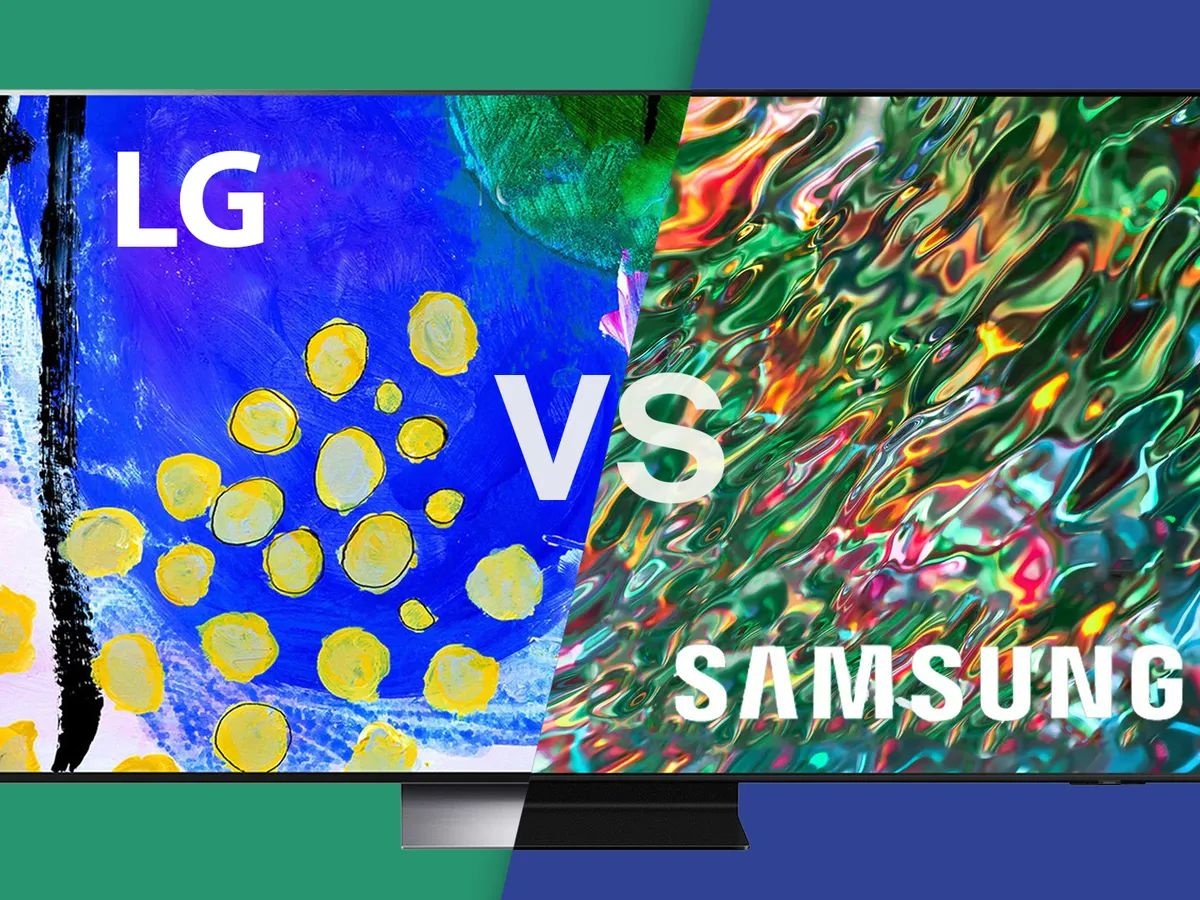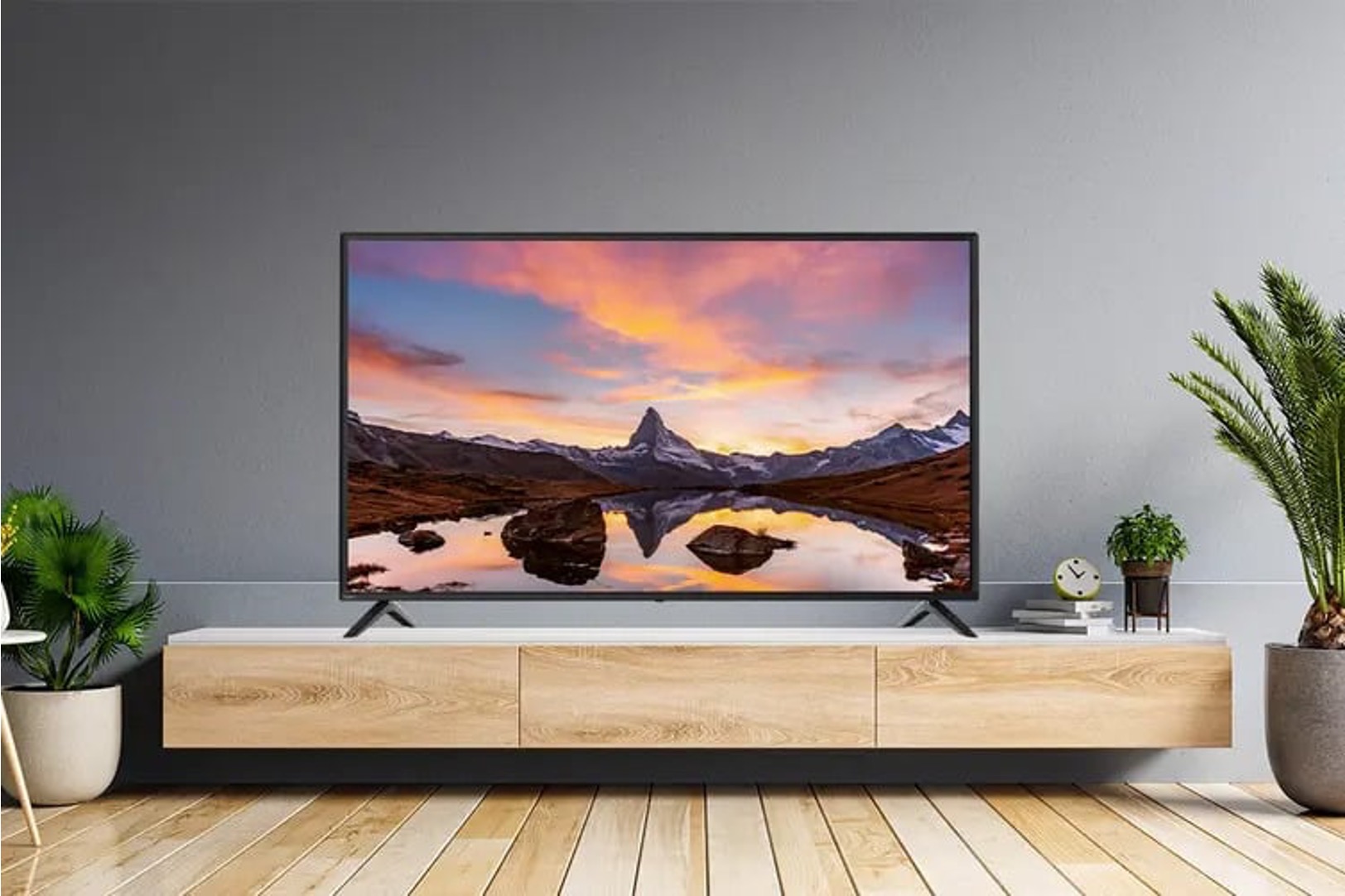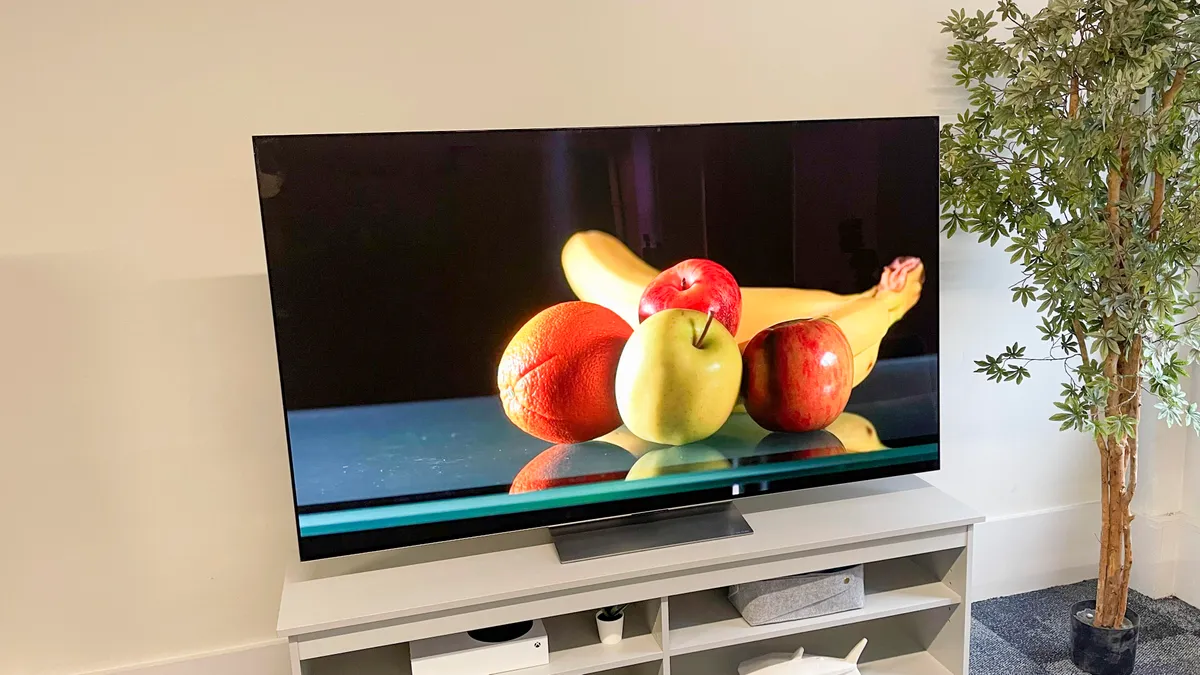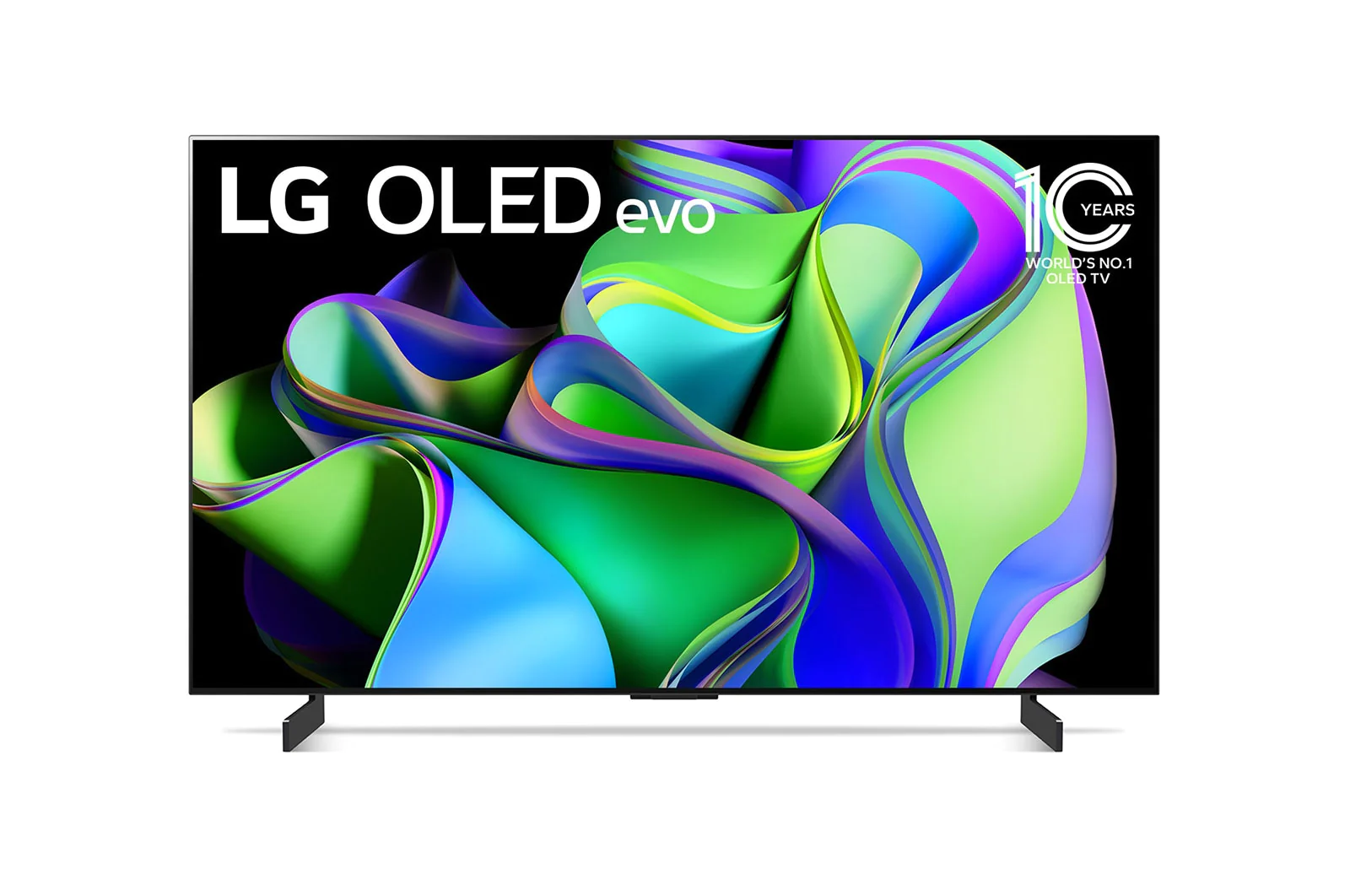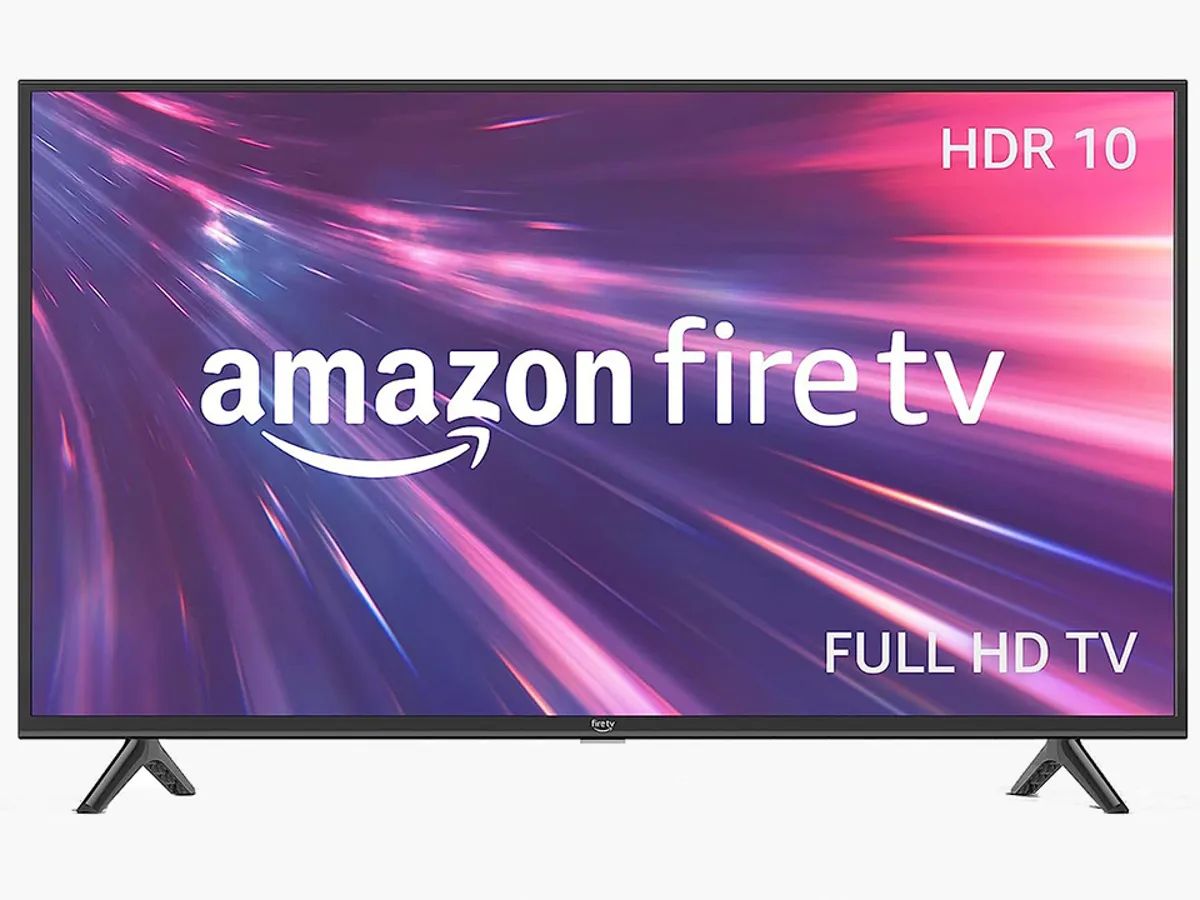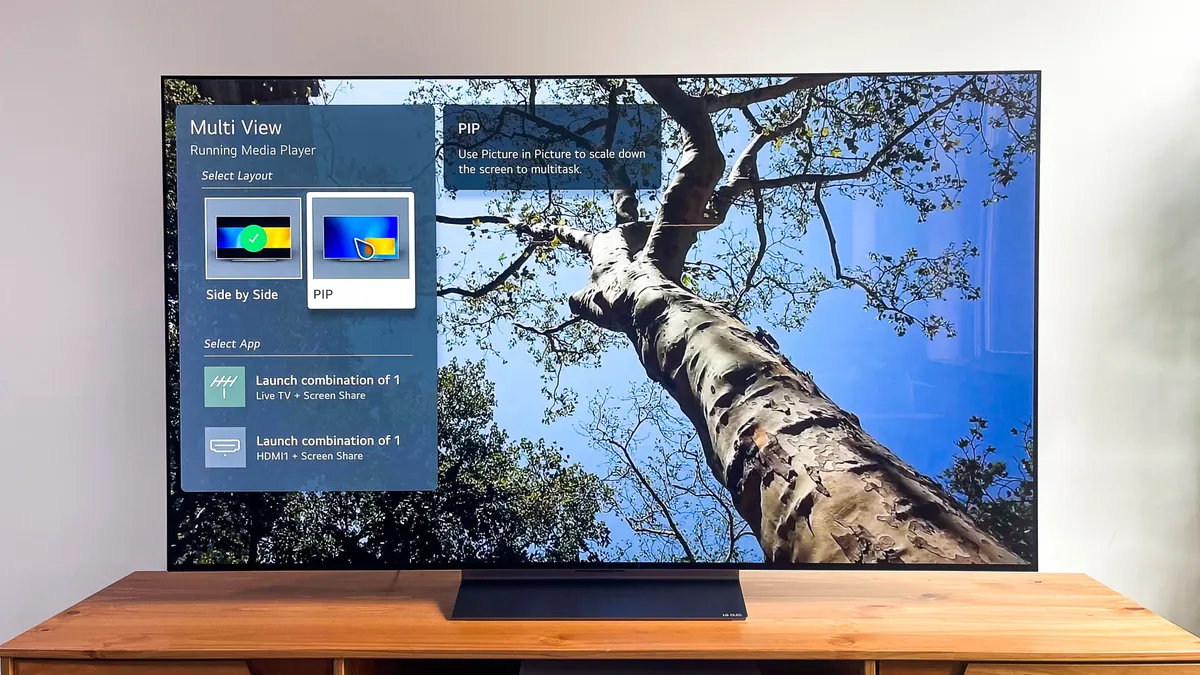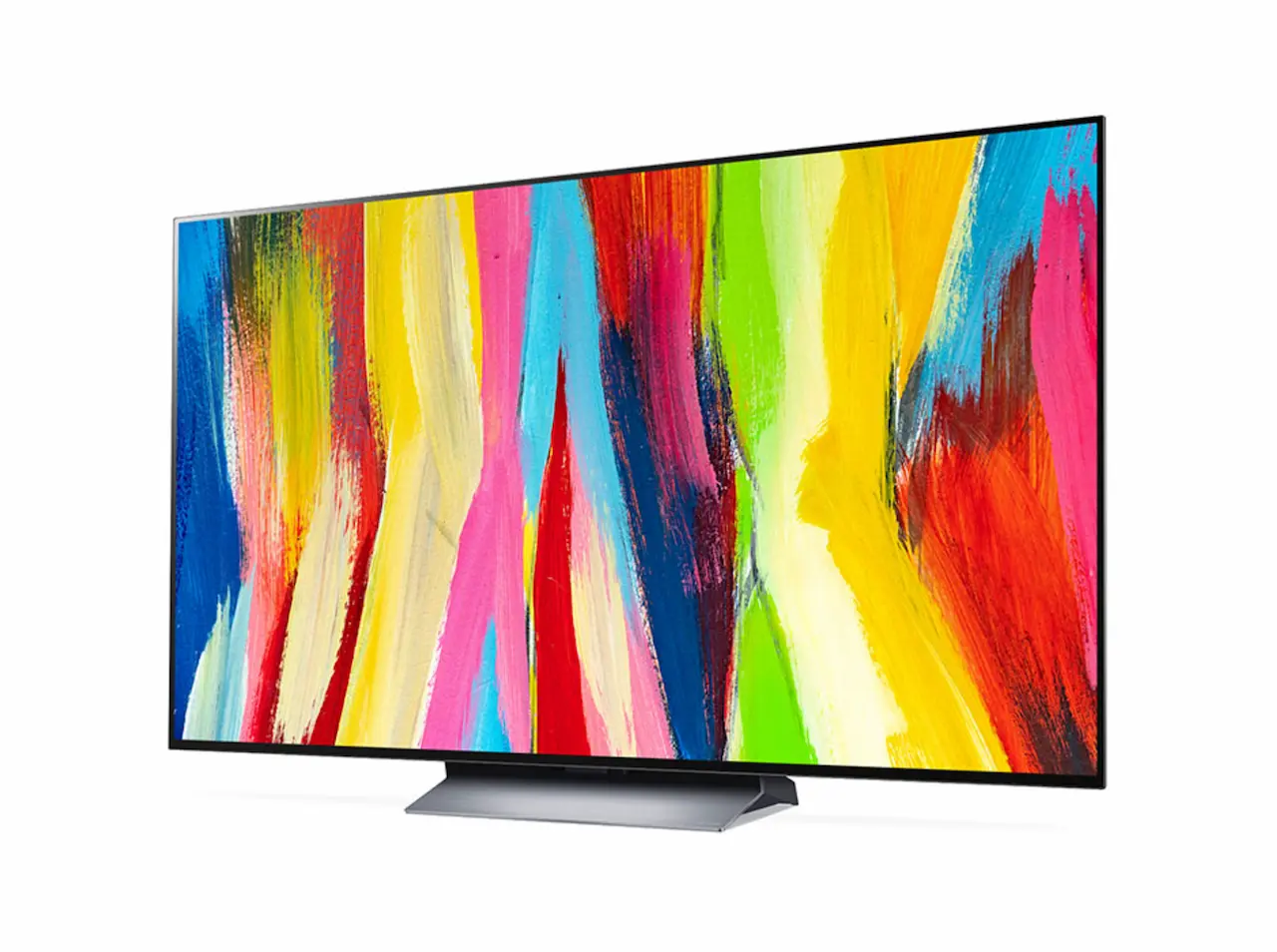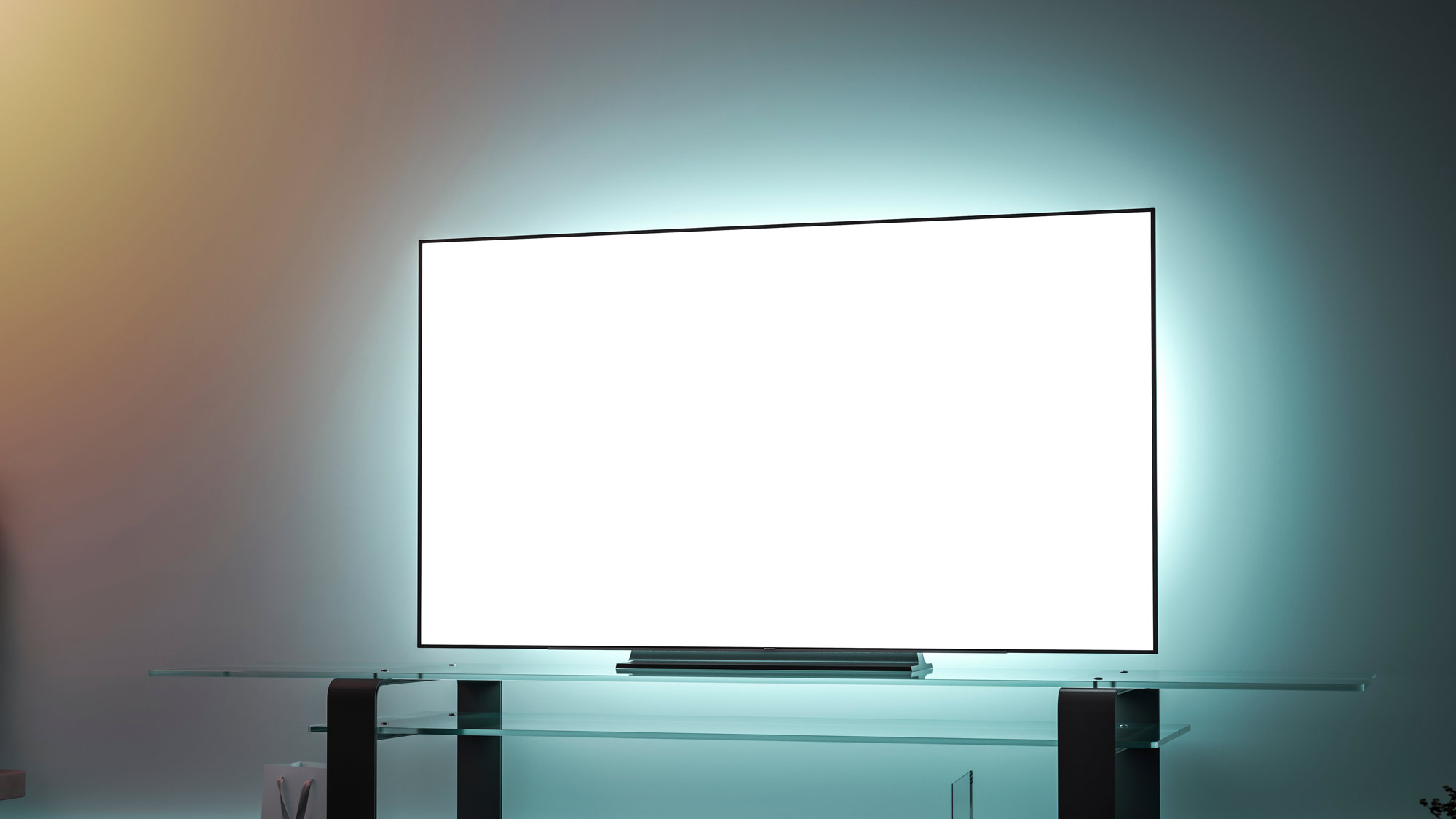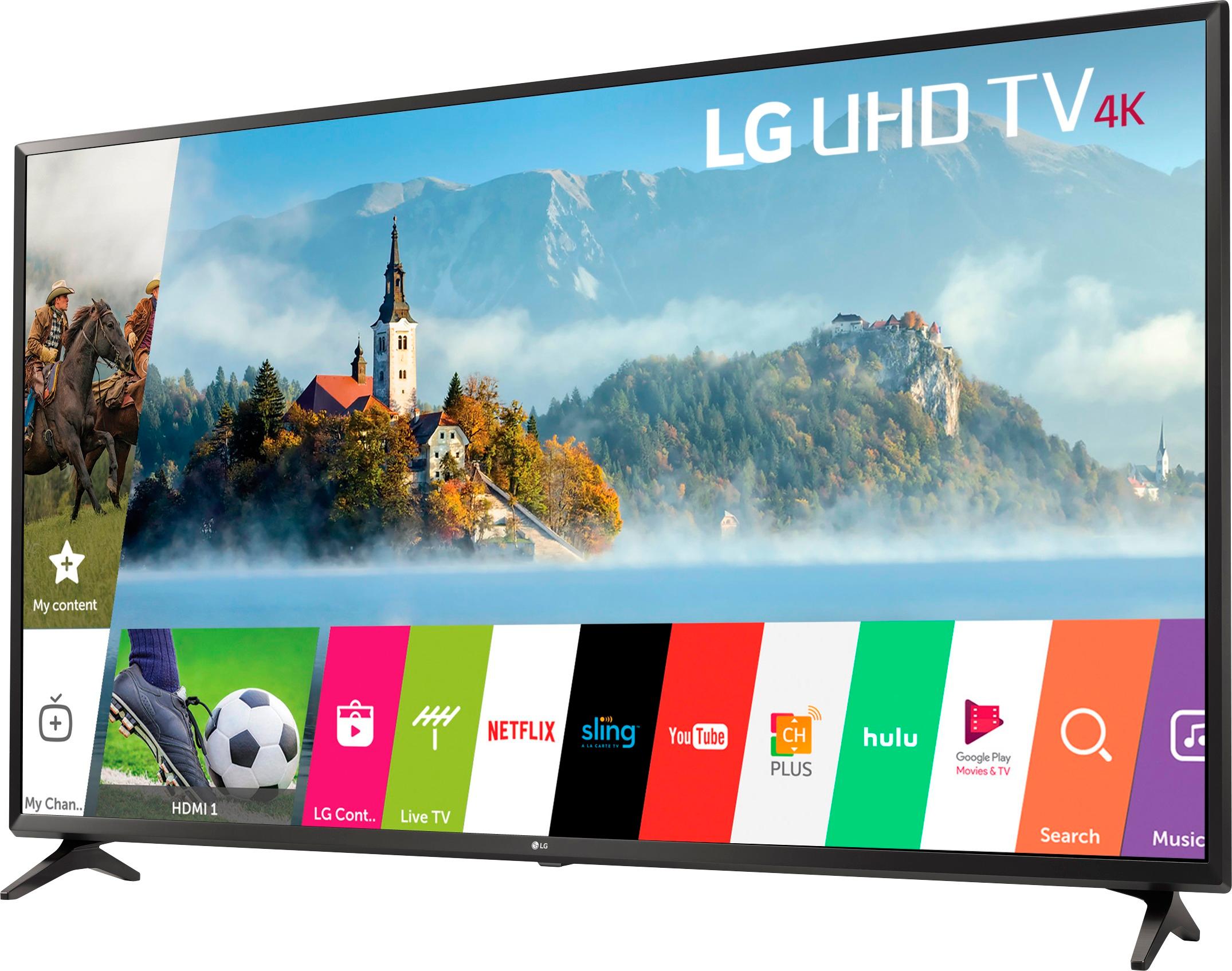Introduction
Welcome to the world of LED TVs, where Samsung and LG are two major contenders vying for your attention and your living room. Both Samsung and LG have established themselves as leading brands in the realm of consumer electronics, and their LED TVs are no exception. In this article, we will delve into the key differences between Samsung and LG LED TVs, helping you make an informed decision when it comes to your next television purchase.
When it comes to choosing a high-quality LED TV, there are several factors to consider, including design, display technology, image quality, smart features, audio quality, connectivity options, price range, and after-sales service. Both Samsung and LG offer a wide range of LED TVs that cater to different budgets and preferences, so let’s dive in and explore what sets them apart.
Samsung is known for its sleek and modern designs, with a focus on slim bezels and minimalist aesthetics. Their LED TVs are visually striking, seamlessly blending into any living space. On the other hand, LG adopts a more understated approach, with a clean and elegant design that complements any room decor. So whether you prefer a bold statement piece or a subtle addition to your home, both Samsung and LG have a design to suit your style.
Now let’s talk about display technology. Samsung utilizes advanced Quantum Dot technology in their high-end LED TVs, which enhances color accuracy and provides a wider color gamut. This results in vibrant and lifelike images. LG, on the other hand, utilizes their proprietary Nano Cell technology, which also enhances color accuracy and reduces screen glare. Both technologies offer a significant improvement over conventional LED displays, ensuring a more immersive viewing experience.
Image quality is a crucial aspect when it comes to LED TVs, and both Samsung and LG excel in this domain. Samsung’s LED TVs boast impressive contrast ratios and deep blacks, thanks to their high-quality backlighting technology. On the other hand, LG’s OLED displays offer exceptional black levels and infinite contrast, creating a truly cinematic experience. Whether you prioritize deep blacks or accurate color reproduction, both Samsung and LG LED TVs deliver exceptional image quality.
Stay tuned as we explore the differences in smart features, audio quality, connectivity options, price range, and after-sales service of Samsung and LG LED TVs. By the end of this article, you’ll have a comprehensive understanding of the features and benefits offered by each brand, helping you make an informed decision when purchasing your next LED TV.
Design
When it comes to choosing an LED TV, design plays a pivotal role in enhancing the overall aesthetics of your living space. Both Samsung and LG have their unique design philosophies, catering to different style preferences.
Samsung is synonymous with sleek and modern designs. Their LED TVs feature slim bezels and a minimalist approach, creating a visually stunning and immersive viewing experience. Samsung’s attention to detail is evident in their craftsmanship, ensuring that their TVs seamlessly blend into any room decor. Whether mounted on a wall or placed on a stand, Samsung LED TVs make a statement.
On the other hand, LG focuses on timeless elegance with a touch of minimalism. LG LED TVs boast a clean and refined design that exudes sophistication. With their slim profiles and smooth edges, LG TVs effortlessly complement any interior design theme. Whether you prefer a traditional stand or a sleek wall-mounting option, LG LED TVs offer versatility and style.
In terms of color options, Samsung offers a wide range of choices to suit different preferences. From the classic black to more daring colors like silver and gold, Samsung allows you to personalize your TV to match your unique style. LG, on the other hand, keeps it simple with predominantly black or titanium finishes, maintaining a timeless and understated look.
Both Samsung and LG understand the importance of cable management and ensuring a clutter-free setup. They incorporate features like hidden cable systems and dedicated cable channels to keep your entertainment area tidy and organized. These thoughtful design elements not only enhance the aesthetics of your living space but also contribute to a hassle-free user experience.
When it comes to display orientation, both Samsung and LG offer a variety of options. Whether you prefer a standard flat screen or an elegantly curved display, both brands have you covered. Curved screens provide a more immersive viewing experience, making you feel like you’re part of the action. However, it’s important to note that curved screens might not be suitable for every viewing angle, so it’s worth considering your seating arrangement before making a decision.
In summary, Samsung and LG LED TVs excel in design, offering a range of styles and color options to cater to different tastes. Whether you prefer the modern and sleek approach of Samsung or the timeless elegance of LG, both brands ensure that their LED TVs elevate your living space, turning it into a hub of entertainment.
Display Technology
When it comes to LED TVs, the display technology used is a crucial factor in determining the overall visual experience. Both Samsung and LG employ innovative display technologies that deliver stunning picture quality and immersive viewing.
Samsung utilizes Quantum Dot technology in their high-end LED TVs. This technology enhances color accuracy and provides a wider color gamut, resulting in vibrant and lifelike images. Quantum Dot displays produce more accurate and vibrant colors compared to traditional LED displays. Furthermore, Samsung’s Quantum Dot technology enhances brightness levels and contrast, allowing for better detail in both bright and dark scenes.
On the other hand, LG incorporates their proprietary Nano Cell technology in their LED TVs. Nano Cell technology improves color accuracy by using tiny particles integrated into the display panel. This technology helps to reduce color bleeding and enhance the overall picture quality. Nano Cell displays also provide wider viewing angles, ensuring that colors remain vivid and consistent, even when viewed from the side.
Both Samsung and LG LED TVs offer High Dynamic Range (HDR) support, which further enhances the visual experience. HDR technology allows for a greater range of contrast and brightness, resulting in more lifelike and realistic images. HDR-enabled content delivers deeper blacks, brighter highlights, and a more extensive color palette, making for a more immersive viewing experience.
Another display technology that sets LG apart is OLED (Organic Light Emitting Diode). LG’s OLED displays offer exceptional black levels and infinite contrast. Unlike traditional LED displays, OLED screens do not require backlighting. Instead, each pixel emits its light, allowing for precise control over brightness levels. This technology delivers deeper blacks, vibrant colors, and incredible contrast, resulting in a truly cinematic experience.
It’s worth noting that Samsung also offers high-end QLED (Quantum Dot LED) displays in their premium range. QLED displays combine Quantum Dot technology with enhanced backlighting, offering excellent color accuracy and brightness. While QLED displays deliver impressive image quality, they may not achieve the same level of contrast as OLED displays.
Both Samsung and LG continue to push the boundaries of display technology, striving to provide consumers with the best visual experience possible. Whether you prioritize accurate colors and wide color gamuts with Samsung’s Quantum Dot or LG’s Nano Cell technology, or you crave the deep blacks and infinite contrast of LG’s OLED displays, both brands offer exceptional display technologies to enrich your viewing pleasure.
Image Quality
When it comes to LED TVs, image quality is a vital factor that directly impacts the viewing experience. Both Samsung and LG are renowned for their commitment to delivering exceptional image quality, utilizing advanced technologies to ensure stunning visuals.
Samsung LED TVs are known for their impressive contrast ratios and deep blacks. This is achieved through their high-quality backlighting technology, which allows for precise control over the brightness levels of individual areas on the screen. The result is a more dynamic image with enhanced depth and detail in both bright and dark scenes. Samsung’s LED TVs also excel in color accuracy and vibrancy, thanks to their Quantum Dot technology, which enhances the color gamut and ensures more lifelike and realistic colors.
On the other hand, LG stands out with its OLED (Organic Light Emitting Diode) displays. OLED technology eliminates the need for backlighting, as each pixel emits its light. This enables LG OLED TVs to achieve true blacks by simply turning off the pixels completely, resulting in infinite contrast and excellent shadow detail. The self-emitting pixels of OLED displays also contribute to a wider color gamut and more accurate color reproduction. The combination of deep blacks, vibrant colors, and infinite contrast offered by LG OLED TVs creates a cinematic and immersive viewing experience.
Both Samsung and LG understand the importance of smooth motion in delivering a superior visual experience. To address this, they incorporate various motion enhancement technologies in their LED TVs. Samsung employs Motion Rate technology, which utilizes image processing algorithms to reduce motion blur and deliver smoother images, particularly during fast-paced action scenes. LG, on the other hand, uses TruMotion technology to achieve a similar effect, ensuring that fast-moving objects are displayed with clarity and precision.
Additionally, both Samsung and LG LED TVs offer High Dynamic Range (HDR) support. HDR technology enhances the overall image quality by expanding the dynamic range, allowing for brighter highlights, deeper blacks, and a more extensive color palette. HDR-enabled content delivers more vibrant and realistic images with a greater level of detail, making for a truly immersive viewing experience.
Overall, whether you opt for Samsung’s LED TVs with their impressive contrast ratios, deep blacks, and vibrant colors, or LG’s OLED displays with their infinite contrast, wider color gamut, and true blacks, both brands excel in providing exceptional image quality. The choice ultimately depends on your personal preferences and the specific features that matter most to you.
Smart Features
In today’s digital age, smart features have become a significant selling point for LED TVs. Both Samsung and LG offer a wide range of smart features that enhance the overall entertainment experience and provide seamless connectivity.
Samsung’s LED TVs come equipped with their proprietary smart platform, known as Tizen OS. Tizen OS offers a user-friendly and intuitive interface, allowing you to easily navigate through various apps and settings. With Tizen, you have access to a wide selection of streaming services, including popular platforms like Netflix, Amazon Prime Video, Hulu, and more. Samsung also provides a robust app store, allowing you to download additional apps and games to further personalize your TV experience.
LG takes a different approach with their smart platform, utilizing webOS. webOS offers a simplified and visually appealing interface, designed to make your TV experience more seamless. Similar to Samsung, LG offers a wide range of streaming services, including popular apps like Netflix, YouTube, and Disney+. The webOS app store also provides access to a variety of additional apps and games, ensuring you never run out of entertainment options.
Both Samsung and LG LED TVs support voice control, allowing you to control your TV using voice commands. Samsung utilizes Bixby, their own voice assistant, which can perform various tasks, such as changing channels, adjusting volume, or searching for content. LG incorporates AI ThinQ technology, which provides voice control functionality through Google Assistant or Amazon Alexa. This means you can control your TV and other smart devices in your home using just your voice.
When it comes to connecting external devices, Samsung and LG offer a range of connectivity options. Both brands provide multiple HDMI and USB ports, allowing you to connect gaming consoles, sound systems, Blu-ray players, and other peripherals. Samsung’s LED TVs also incorporate One Connect Box, which allows you to connect your devices to a separate box, reducing cable clutter and simplifying installations.
It’s important to note that the availability of certain smart features may vary depending on the specific model of LED TV you choose. Higher-end models often come with additional features, such as built-in cameras, advanced motion control, and the ability to mirror your smartphone or tablet screen.
Overall, both Samsung and LG offer robust smart features that enhance your TV viewing experience and provide seamless connectivity options. Whether you prefer Samsung’s Tizen OS with Bixby voice control or LG’s webOS with AI ThinQ and compatibility with Google Assistant or Amazon Alexa, you can enjoy a range of streaming services, app stores, and smart functionalities to elevate your entertainment experience.
Audio Quality
While a great picture is essential, the audio quality of an LED TV can significantly enhance the overall viewing experience. Both Samsung and LG understand the importance of immersive sound and offer various audio technologies to deliver impressive audio performance.
Samsung LED TVs employ different audio technologies depending on the model and price range. Their higher-end models often feature technologies like Dolby Atmos and Object Tracking Sound (OTS). Dolby Atmos provides a three-dimensional audio experience, creating a sense of depth and realism. It delivers sound that moves around you, making you feel like you’re in the middle of the action. OTS technology further enhances the audio by analyzing the audio content and adjusting the sound accordingly, resulting in clearer dialogues and more distinct sound effects.
LG LED TVs also prioritize audio quality and offer various audio technologies. Their high-end models often feature Dolby Atmos, which creates an immersive audio experience by delivering sound from all directions, including overhead. LG also incorporates AI Sound Pro technology in some of their LED TVs, which analyzes the audio content in real-time and applies sound tuning to optimize the listening experience. This technology delivers clearer dialogues and enhances the overall audio clarity.
Both Samsung and LG offer built-in speakers in their LED TVs, providing decent sound quality for everyday viewing. However, for a more immersive audio experience, it’s recommended to complement your LED TV with an external audio system, such as a soundbar or a home theater system. Both brands provide various connectivity options, including HDMI ARC and optical audio output, to easily connect to external audio devices.
It’s important to note that audio quality can vary between different models and price ranges within each brand. Higher-end models often offer better audio performance with advanced audio technologies and more powerful speakers. In contrast, entry-level models may have more basic audio capabilities.
In summary, both Samsung and LG prioritize audio quality and offer various advanced audio technologies to enhance the viewing experience. Whether you choose Samsung’s Dolby Atmos and OTS technologies or LG’s Dolby Atmos and AI Sound Pro, you can expect improved sound clarity, immersive audio, and the option to connect external audio systems for a more cinematic audio experience.
Connectivity Options
Connectivity options are an important consideration when choosing an LED TV, as they determine the compatibility and flexibility of the TV with other devices and peripherals. Both Samsung and LG offer a variety of connectivity options to meet different needs and preferences.
One common feature found in both Samsung and LG LED TVs is the availability of multiple HDMI (High-Definition Multimedia Interface) ports. HDMI ports allow you to connect various devices such as gaming consoles, Blu-ray players, streaming devices, and soundbars, providing high-quality audio and video transmission. Having multiple HDMI ports on your TV allows you to connect and switch between devices without the need for additional cables or adapters.
USB ports are also a standard connectivity option provided by both Samsung and LG LED TVs. These USB ports enable you to connect USB storage devices, such as flash drives or external hard drives, to access and enjoy multimedia content like photos, videos, and music directly from your TV. USB ports can also be used to connect keyboards or mice for easier navigation and control.
In terms of wireless connectivity, both Samsung and LG LED TVs offer built-in Wi-Fi capabilities. This allows you to connect your TV to your home network wirelessly, enabling access to online streaming services, browsing the web, and downloading apps. With Wi-Fi connectivity, you can also stream media content from your smartphones, tablets, or computers directly to the TV using screen mirroring or casting technologies.
Samsung and LG both understand the importance of audio connectivity options. Both brands provide optical audio output, also known as TOSLINK, which allows you to connect external audio systems, such as soundbars or home theater systems, to enhance the sound quality of your TV. Additionally, they also offer HDMI ARC (Audio Return Channel), which allows two-way audio transmission through the HDMI cable. This simplifies the setup and control of audio devices connected to the TV.
For those who still prefer traditional connections, both Samsung and LG LED TVs include composite and component video inputs. These inputs allow you to connect older devices, such as DVD players or game consoles, that use analog connections. These options ensure compatibility with a wide range of devices, regardless of their age or connection type.
Last but not least, Samsung’s higher-end models feature a unique connectivity option called One Connect Box. The One Connect Box serves as a separate hub that connects to the TV, consolidating all the cable connections in one place. This not only reduces cable clutter but also makes it easier to connect and disconnect devices without reaching behind the TV.
Overall, both Samsung and LG LED TVs provide a range of connectivity options to ensure compatibility and flexibility. Whether you prefer HDMI ports, USB connectivity, wireless capabilities, or specific audio connections, you can find a TV that suits your specific needs.
Price Range
Price is an important factor to consider when purchasing an LED TV, as it can vary significantly depending on the brand, model, and features offered. Both Samsung and LG offer LED TVs in a wide range of price points, allowing consumers to find a TV that fits their budget.
When it comes to entry-level LED TVs, Samsung tends to offer more affordable options compared to LG. Samsung’s entry-level models provide decent picture quality, essential smart features, and reliable performance at a budget-friendly price. These TVs are suitable for those who are looking for a basic yet reliable LED TV without breaking the bank.
On the other hand, LG’s entry-level LED TVs may be slightly pricier compared to Samsung’s offerings. However, they often come with additional features, such as better audio quality, superior display technology, and more advanced smart features, making them a compelling option for those seeking a bit more value for their investment.
As you move up the price range, both Samsung and LG offer mid-range LED TVs that provide an excellent balance of performance and affordability. These TVs typically offer better display technology, improved picture quality, and enhanced smart features compared to the entry-level models. Additionally, you may find features like higher refresh rates, local dimming, and HDR support in the mid-range LED TVs from both brands. These mid-range options cater to consumers who want a more premium experience without paying a premium price.
At the top end of the price spectrum, both Samsung and LG offer high-end LED TVs with cutting-edge features and superior performance. These flagship models often incorporate the latest display technologies, such as Quantum Dot or OLED, delivering stunning picture quality with vibrant colors and deep blacks. In terms of smart features, high-end LED TVs from both brands offer robust platforms with advanced functionalities and AI capabilities. These TVs are ideal for tech enthusiasts and those who prioritize top-of-the-line performance and the latest features.
It’s important to note that the price range can vary significantly depending on the screen size. Generally, larger-sized LED TVs come with a higher price tag due to the cost of materials and manufacturing. As such, it’s essential to determine your budget and screen size preferences before making a purchasing decision.
Overall, both Samsung and LG offer LED TVs at various price points, catering to different budgets and requirements. Whether you are looking for an entry-level TV, a mid-range option with enhanced features, or a high-end model with the latest technologies, you can find a suitable LED TV from either brand.
Warranty and After-Sales Service
When purchasing an LED TV, considering the warranty and after-sales service is essential to ensure peace of mind and customer satisfaction. Both Samsung and LG prioritize customer support and offer comprehensive warranty coverage for their LED TVs.
Samsung LED TVs typically come with a standard one-year warranty, which covers any manufacturing defects or faults that may arise during normal use. They also provide the option to purchase extended warranty plans for additional coverage. Samsung is known for its prompt customer service and has a strong network of authorized service centers in various locations, making it easier to seek assistance or arrange repairs if needed.
In comparison, LG LED TVs usually come with a standard one-year warranty as well, covering manufacturing defects and malfunctions. Like Samsung, LG also offers extended warranty options for those who wish to extend their coverage. LG boasts a robust customer service network and has authorized service centers across different regions, ensuring prompt and efficient after-sales support.
Both Samsung and LG place a strong emphasis on customer satisfaction and are committed to resolving any issues that may arise with their LED TVs. They have dedicated customer support teams that can assist with troubleshooting, technical queries, and warranty claims, ensuring that customers receive timely and efficient assistance.
Aside from warranty coverage, another aspect of after-sales service to consider is the availability and provisioning of software updates for the LED TVs. Samsung and LG both prioritize providing regular firmware updates to enhance the performance, security, and compatibility of their TVs. These updates may include new features, bug fixes, and improvements to the user interface or smart features. Timely software updates help keep the TV up-to-date and ensure a seamless and optimized user experience.
It’s worth noting that warranty coverage and after-sales service can vary depending on the region and specific model of the LED TV. It’s recommended to review the warranty terms and conditions provided by the manufacturer for precise details on coverage, limitations, and procedures for warranty claims.
Overall, whether you choose Samsung or LG, you can expect a solid warranty coverage and reliable after-sales service. Both brands are committed to ensuring customer satisfaction and offer comprehensive support to address any issues that may arise.
Conclusion
After exploring the key differences between Samsung and LG LED TVs, it is clear that both brands offer a wide range of options to suit different preferences, budgets, and viewing needs. Whether you prioritize design, display technology, image quality, smart features, audio quality, connectivity options, or after-sales service, both Samsung and LG have something to offer.
Samsung LED TVs impress with their sleek and modern designs, utilizing Quantum Dot technology for enhanced color accuracy and vibrant images. They also provide a user-friendly smart platform, comprehensive connectivity options, and solid after-sales service. Samsung’s LED TVs cater to a range of budgets, making them an appealing choice for value-conscious consumers.
On the other hand, LG LED TVs stand out with their timeless elegance, exceptional OLED display technology, and intuitive webOS smart platform. LG’s commitment to audio quality and AI-driven features further enhances the overall viewing experience. Their LED TVs offer a range of connectivity options and reliable after-sales service, making them a strong contender in the market.
Ultimately, the choice between Samsung and LG LED TVs comes down to personal preferences, viewing habits, and budget considerations. It’s essential to evaluate specific features and factors that are most important to you, such as design aesthetic, display technology, audio quality, and connectivity options.
Whether you go with a Samsung LED TV or an LG LED TV, both brands are renowned for their commitment to innovation, quality, and customer satisfaction. With their advanced technologies, comprehensive smart features, and robust support networks, you can be assured of a fantastic viewing experience with either option.
Take the time to research and compare the models within your desired price range, read customer reviews, and consider your specific needs before making your final decision. With either a Samsung or an LG LED TV, you can bring the cinema experience into your own living room and enjoy your favorite movies, shows, and games with stunning visuals and immersive sound.







